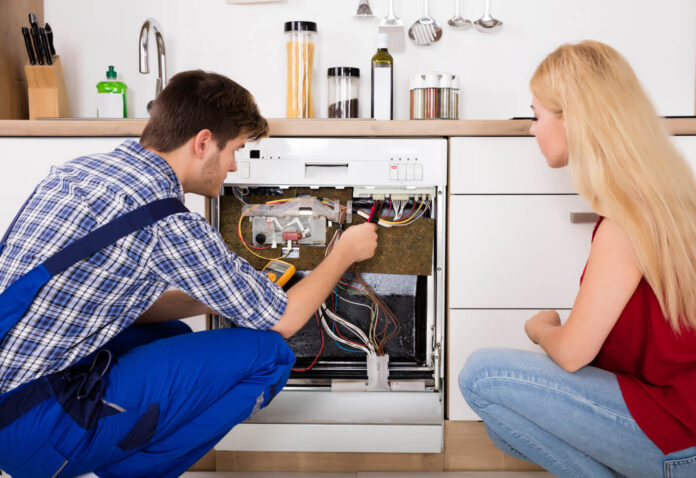
When your home appliances break down, you might feel the urge to call a professional right away. However, some problems are easy to fix yourself. This article will guide you through simple steps to troubleshoot and repair common home appliances like washing machines, refrigerators, and microwaves.
Know the Basics of Safety
Before you touch any appliance, always unplug it. Working on a plugged-in appliance puts you at risk for electric shock. Use gloves to protect your hands, especially when dealing with sharp or rough surfaces. Make sure you work in a well-lit area to see what you’re doing. Finally, keep kids and pets away from your work area. You must also read the manual.
Identify the Issue
The first step in fixing an appliance is finding out what’s wrong. Listen for odd sounds, check for unusual smells, and observe any changes in performance. The user manual often has a troubleshooting section that describes common problems and solutions. Use this as a starting point.
Use the Right Tools
Having the right tools makes any repair job easier. Screwdrivers, wrenches, pliers, and a multimeter are some basic tools you’ll need. A multimeter measures electrical current and is essential for diagnosing issues with motors and circuits. Make sure your tools are in good condition and always within reach.
Repairing Washing Machines
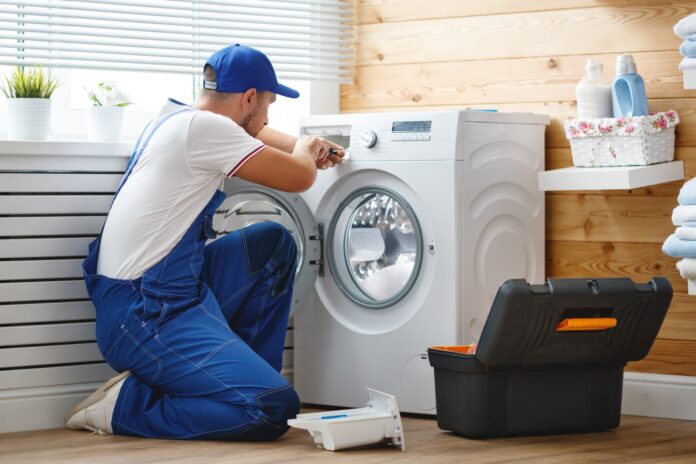
Washing machines can have various issues such as not spinning, leaking, or not draining properly.
Not Spinning
If your washing machine doesn’t spin, check the belts and pulleys. A broken belt stops the drum from spinning. To replace it, remove the back panel of the machine, find the broken belt, and put a new one in its place.
Leaking
For leaks, examine the hose connections. Loose hoses can lead to water leaks. Tighten them with a wrench, but don’t overtighten, as that can cause cracks.
Not Draining
If your machine doesn’t drain, a clogged drain pump is likely the culprit. Access the pump, usually located at the bottom of the machine, and remove any blockages.
Fixing Refrigerators
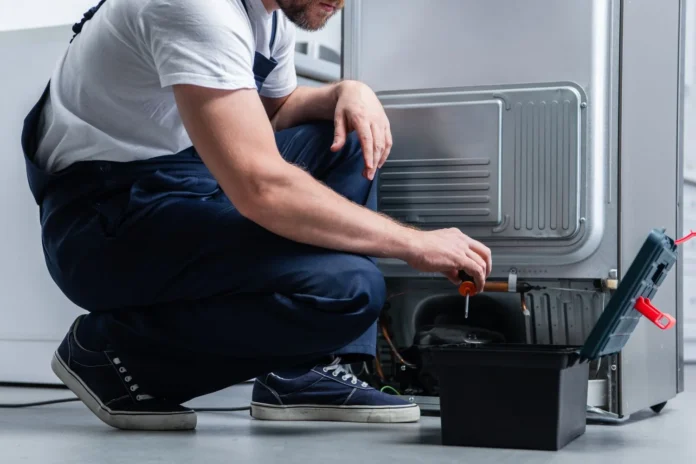
Refrigerators keep our food fresh, but they can also give us a headache when they stop working.
Not Cooling
If the refrigerator isn’t cooling, the thermostat might be set too high. Adjust the settings and see if it makes a difference. A blocked vent could also be the issue. Make sure to remove any obstructions from the vent openings.
Water Dispenser Issues
If the water dispenser doesn’t work, check the water line for kinks or leaks. A faulty water valve could also be the problem, which you’ll need to replace.
Strange Noises
Unusual noises often come from the condenser or evaporator fan motors. If these motors fail, they make loud noises. You’ll need to replace the faulty motor.
Microwaves and How to Handle Them
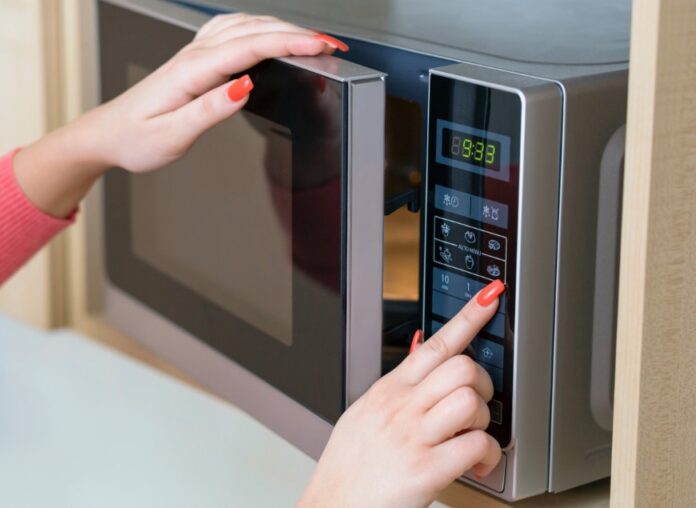
Microwaves cook food quickly but can have their own set of issues.
Not Heating
If your microwave doesn’t heat, the problem often lies with the magnetron, the part that generates microwaves. Unfortunately, replacing a magnetron is complex and best left to professionals.
Turntable Not Spinning
If the turntable doesn’t spin, the issue could be the drive motor. To replace it, you’ll need to disassemble the microwave, locate the motor, and install a new one.
Buttons Not Working
A malfunctioning touchpad may be responsible for unresponsive buttons. Replacing the touchpad usually solves this issue.
Conduct a Test Run
After you finish repairs, plug the appliance back in and test it. Make sure it functions correctly and that you’ve resolved the problem. If not, you might need to repeat some steps or consider calling a professional for a more complex issue.
Know When to Call a Professional
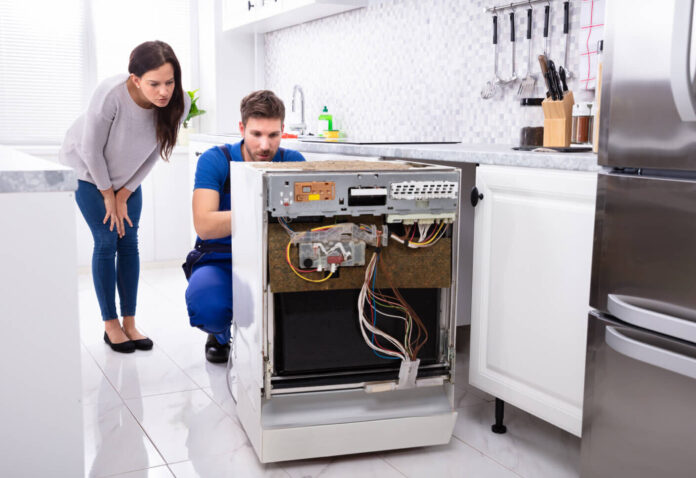
While DIY repairs can save you money, some issues are beyond a quick fix. If you’re dealing with electrical or gas-related problems, or if the issue persists despite your efforts, it’s safer to hire a qualified technician.
Common Mistakes to Avoid
In your quest for DIY repairs, it’s easy to make mistakes. Here are some common pitfalls you should steer clear of:
Incorrect Diagnostics
Make sure you properly identify the problem before attempting any repairs. Using the wrong solution for the issue at hand can lead to more damage and higher costs.
Over Tightening Components
While it’s important to secure loose parts, overtightening can lead to cracks and wear. Use your tools carefully to ensure you don’t apply excessive force.
Ignoring Safety Precautions
Skipping safety measures can lead to accidents. Always unplug the appliance, use safety gear, and work in a well-lit space.
Replacing Parts
Often, you’ll need to replace parts that wear out or break. Always buy parts that are compatible with your appliance model. You can usually find this information in the user manual or by searching online for the appliance’s model number.
Where to Buy
You can buy parts online, at a hardware store, or from the manufacturer directly. Make sure you’re buying from a reputable source to ensure the quality of the part.
Installation Tips
Replacing a part usually involves removing the broken component and installing the new one in the same place. Pay close attention when removing the old part so you can install the new one correctly.
The Importance of Regular Maintenance
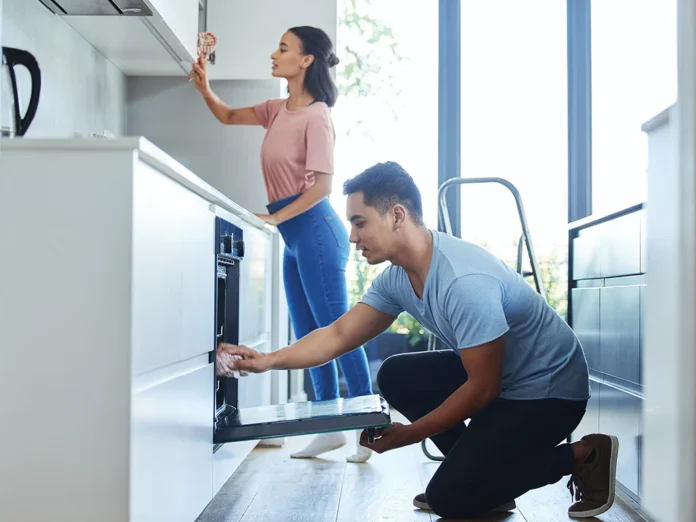
Regular maintenance goes a long way in extending the life of your appliances. Cleaning filters, checking connections, and inspecting moving parts can help you spot issues before they become bigger problems.
Clean Regularly
Dirt and grime build-up can lead to inefficiency and eventual breakdown. Make it a habit to clean your appliances according to the manufacturer’s instructions.
Inspect Periodically
Periodic inspections can help you catch issues early. Look for wear and tear on belts, hoses, and electrical connections. If something looks worn out, replace it before it breaks.
Benefits of DIY Repairs
Fixing appliances yourself has several advantages. You save money by not hiring a technician. You also gain valuable skills and knowledge about how your appliances work, making it easier to handle future issues.
Cost Savings
Professional repair services can be expensive. By tackling problems yourself, you only spend money on replacement parts.
Skill Building
The more you learn about appliance repair, the more confident you’ll become in your abilities. This knowledge can be useful for other DIY projects around the home.
Conclusion
Troubleshooting and repairing home appliances yourself can be a rewarding and cost-effective experience. By following the guidelines above, you can diagnose and resolve many common issues without the need for professional help. Always prioritize safety, use the right tools, and know when it’s time to call in the experts.






